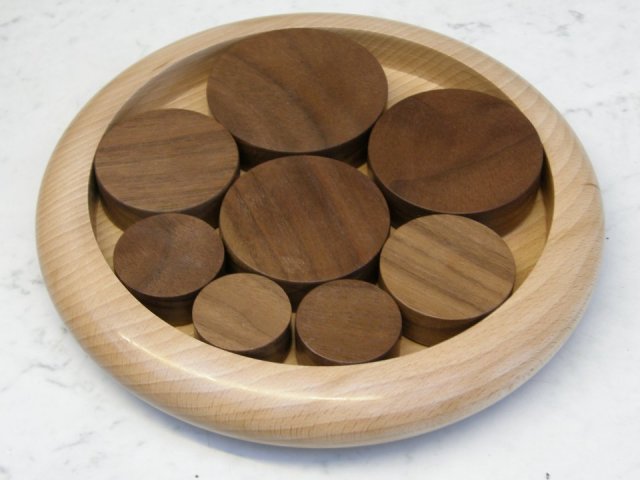


Jakob Steiner (1796-1863) discovered a mathematical technique called "Inversion", but he kept it a secret for many years. He used it to make many brilliant discoveries to the amazement of his fellow mathematicians.
One of his demonstrations was the method of closely packing several circles of different sizes into a bigger one.
Provided you get the numbers right, it makes an intriguing puzzle which is very easy to turn, but quite tricky to solve.
Here are the diameters of a set of discs accurate to 0.1mm, but since that is about the thickness of a piece of paper, it is not really necessary to be quite that accurate. Plus 0.0mm or minus 0.3mm will probably do.
There is a shallow circular tray of 200.0 mm diameter, and a set of eight discs whose diameters are 40.0mm, 43.0mm, 46.0mm, 56.2, 62.8mm, 74.0mm, 78.3mm and 83.8mm. After a bit of trial and error, you will find that they will fit into the tray in only one way
There is a design program on the web which will let you calculate the diameters of any number of circles between 4 and 10
First make a full size prototype in birch ply and then, when the sizes of the discs are exactly right, replace each of them, one by one, with an equivalent disc in walnut or some similar dark wood. Finally replace the plywood tray with one of the same size in a light wood such as ash, beech or sycamore.